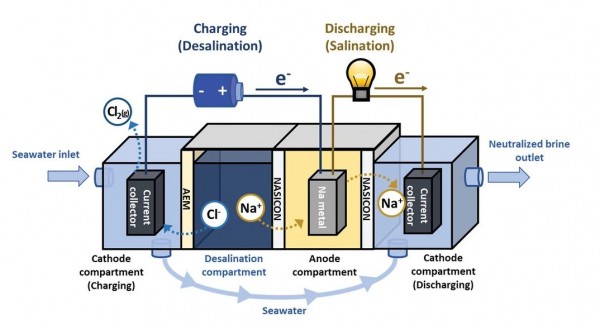Simultaneous Energy Storage and Seawater Desalination using Rechargeable Seawater Battery: Feasibility and Future Directions
- Journal
- Advanced Science
- Vol
- 8
- Page
- 2101289
- Year
- 2021
Rechargeable seawater battery (SWB) is a unique energy storage system that can directly transform seawater into renewable energy. Placing a desalination compartment between SWB anode and cathode (denoted as seawater battery desalination; SWB-D) enables seawater desalination while charging SWB. Since seawater desalination is a mature technology, primarily occupied by membrane-based processes such as reverse osmosis (RO), the energy cost has to be considered for alternative desalination technologies. So far, the feasibility of the SWB-D system based on the unit cost per desalinated water ($ m−3) has been insufficiently discussed. Therefore, this perspective aims to provide this information and offer future research directions based on the detailed cost analysis. Based on the calculations, the current SWB-D system is expected to have an equipment cost of ≈1.02 $ m−3 (lower than 0.60–1.20 $ m−3 of RO), when 96% of the energy is recovered and stable performance for 1000 cycles is achieved. The anion exchange membrane (AEM) and separator contributes greatly to the material cost occupying 50% and 41% of the total cost, respectively. Therefore, future studies focusing on creating low cost AEMs and separators will pave the way for the large-scale application of SWB-D.

